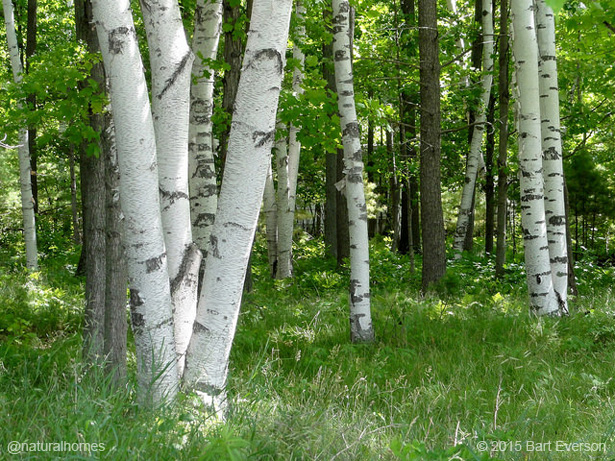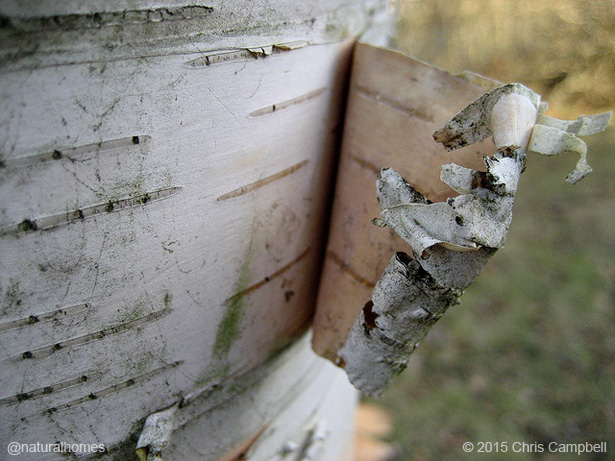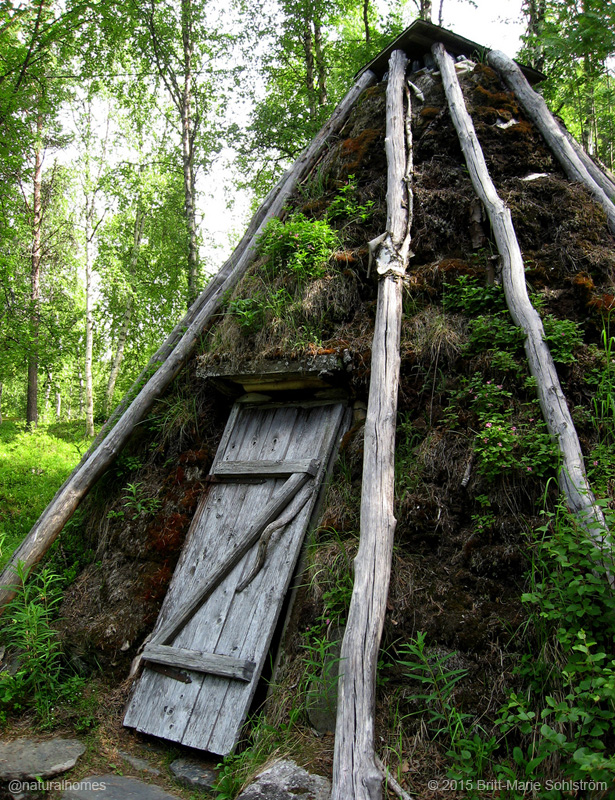| |
|
|
|
Birch bark, undressing mother nature.
|
|
| |
|
|
|
|
|
|
|
|
The term “birch bark” is really too general as
it is usually just the outer, protective layer of the bark
that one refers to when using this term. So in Scandinavia
they don't call the outer layer 'bark' but have instead given
it its own name “näver” (Swedish) or ”never” (Norwegian) which
clearly shows its historical importance in this region.
|
|
|
 |
|
| |
|
|
|
|
|
|
|
|
|
|
|
The inner layer (bast or phloem) which in
Scandinavia is referred to as the actual bark, have also had its
uses, specifically for tanning which is the process of treating
animal hides and turning them into leather.
A Key Resource
Birch bark has in fact played a major role in the everyday life of
the Eurasian and North American peoples for over 5000 years, for a
wide variety of useful and necessary items. Baskets, boxes,
cooking vessels, canoes, rucksacks, musical instruments, writing
material, shoes and shelters – are just some of the many things
that were made from this extraordinary material.
It has also been used for making birch tar or birch pitch (see
picture right), a substance high in various phenols that is derived from
the dry distillation of the bark that were used for many different
purposes such as an adhesive, disinfectant and as the final water
proofing of high quality leather (Russia leather). In the video
right bushcraft expert Dave Canterbury shows how to
 make birch oil, a finer quality version of birch tar.
make birch oil, a finer quality version of birch tar. |
|
|
|
|
|
|
|
|
|
The oil is an antiseptic and can be used on your
skin as an insect repellent, on wounds to prevent infections and
to treat rashes or eczema. Birch bark was in fact one of the largest Scandinavian exports
along with pine tar, the lifeblood of the north, until
the 17th century; you could even pay your taxes with it. |
|
|
|
|
|
|
A Natural Fungicide
The fact that birch bark is 100% water proof has surely played a
major role in its usefulness, and so has its flexibility – but the
high content of
betulin (a substance with fungicidal properties)
also makes birch bark perfect for constructing various containers
for food preservation, or for simply holding and keeping water
fresh. Thanks to the betulin the bark will not only perform all
these very important tasks but also last for a very long time,
making it the perfect choice for moisture barriers for a wide
range of applications, e.g. in basically any type of natural
shelter construction.
It is advisable to harvest birch bark from spring up until the
middle of July. During this period the birch is sapping which
makes harvesting a lot easier. The birch bark comes off the trunk
with ease but it has a natural tendency to curl up and when dry it
can be impossible to uncurl again, so for this reason the sheets
needs to dry under compression, which forces the sheets to stay
flat. |
|
 |
|
| |
|
|
|
|
The birch grows its bark differently from
most other species of trees. Instead of having its fibres run vertically (in the same
direction as the trunk) it grows horizontally (around the trunk).
It is a very tough material, like a mix between leather and
cardboard, of which you can remove very large sheets that later
can be cut into the right size and shape for the intended purpose. |
|
|
|
|
|
|
|
|
|
|
|
Canoes made from birch bark ...
Old birch logs have been found in bogs, under water, and when
lifted up the bark have still been white and fresh as the day it
went in, while the wood is completely rotten and has basically
turned into a black soup that can be poured out, essentially
leaving an intact birch bark tube.
It has such resistance to water that some native American
tribes even made their canoes for centuries using birch bark,
resulting in a watertight and very light canoe that could easily
be lifted and carried, yet still be very durable if maintained
correctly. These vessels are truly magnificent works of art which
intuitively feels brittle and not very long-lasting, but the fact
is that some of these canoes were in active use for over 100
years. They were highly treasured items that were treated with
great care and respect, being passed on from one generation to the
next, as were the construction techniques. |
|
|
|
|
|
|
|
|
|
Bushcraft expert Ray Mears is
shown the traditional
techniques of
 building birch bark canoes by Pinock Smith, a canoe
builder from the Algonquin tribe. building birch bark canoes by Pinock Smith, a canoe
builder from the Algonquin tribe. |
|
|
|
|
|
|
|
|
|
|
|
A Unique Building Material
Being 100% waterproof and having a natural
resistance to fungus and rot means that birch bark is a perfect
moisture barrier for natural building. The traditional
Scandinavian sod roof (a Scandinavian vernacular)
can definitely attest to this fact. A similar application is to
use a few layers of birch bark between sill beams and foundation
to protect the timber from any possible condensation that might
form on cold, hard surfaces such as stone.
For any natural builder looking to use natural or non-industrial
materials it is hard if not impossible to find a local, organic
material which can withstand moisture for such a long time as
birch bark. Most people living in birch-rich locations have
historically used birch bark as moisture protection for a variety
of different applications when constructing shelters. The
indigenous people of Scandinavia (Sami) certainly knew how to make
the most of this resilient building material. Some versions of
their tipi-like dwellings, called
goahti, were completely covered with
birch bark. The peat or sod goahti (see right) is a variety
covered with sod to keep the birch bark in place and also work as
an insulating wrap, just like a Sod Roof. Some native American
tribes used birch bark when constructing their traditional
wigwams, much in the same way as the Sami.
|
|
 |
|
|
|
|
|
|
|
|
|
|
|
|